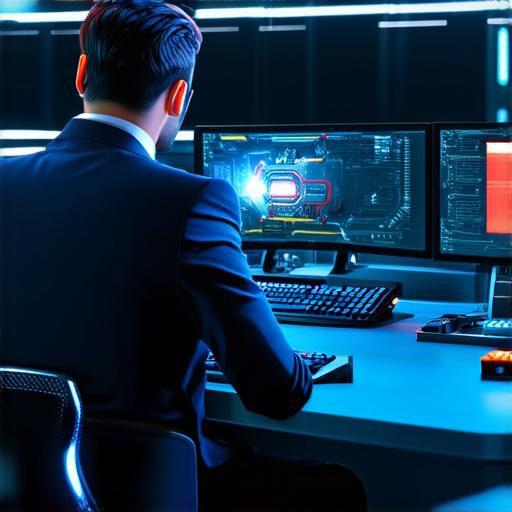Performance Optimization in Unreal Engine 5
One of the most important aspects of game development is ensuring that your game runs smoothly and looks great on a wide range of hardware configurations. In order to achieve this, you’ll need to have a good understanding of how Unreal Engine 5 handles performance.
- Using LOD (Level of Detail) models to reduce the amount of detail in objects that are far away from the camera. This can help improve frame rates on lower-end systems.
- Implementing dynamic lighting and shadows to create a more realistic and immersive environment. However, this can also have a negative impact on performance, so it’s important to use it judiciously.
- Using particle effects sparingly, as they can be quite resource-intensive. Instead, consider using baked textures or precomputed animation clips to achieve the same effect.
- Minimizing the use of post-processing effects, which can also have a negative impact on performance.
Animation Techniques in Unreal Engine 5
Another important aspect of game development is creating smooth and fluid animations for your characters and objects. In Unreal Engine 5, there are several techniques that you can use to achieve this:
- Using physics-based animation to create realistic movements for your characters and objects. This involves simulating the physical properties of the object (such as weight and friction) in order to create natural-looking animations.
- Implementing motion capture to record real-world movements and apply them to your characters. This can be especially useful for creating lifelike character movements, but it can also be time-consuming and expensive.
- Using animation blueprints to create custom animations without writing code. Animation blueprints are a visual way of creating animations using a drag-and-drop interface, making them easier to use than traditional programming methods.
Visual Effects in Unreal Engine 5
Finally, one of the key features of Unreal Engine 5 is its support for a wide range of visual effects, including particle effects, lighting, and post-processing effects. These can be used to create stunning visuals and enhance the overall look and feel of your game.
Some examples of visual effects that you might want to consider using in your game include:
- Particle effects, such as explosions or smoke, to add realism and drama to your game.
- Lighting and shadow effects to create a sense of depth and atmosphere in your environment.
- Post-processing effects, such as bloom or chromatic aberration, to enhance the visual quality of your game.

Real-Life Examples of Unreal Engine 5 Games
Now that we’ve covered some of the key techniques for unlocking mastery in Unreal Engine 5 game development, let’s take a look at some real-life examples of games that have been built using this powerful platform.
One example of a game that has been built using Unreal Engine 5 is “The Medieval Engine,” a medieval-themed sandbox game that allows players to build and defend their own castles. The game features stunning graphics, realistic physics, and a wide range of visual effects, making it a great example of what’s possible with this platform.
Another example is “Genshin Impact,” an open-world action role-playing game that takes place in the fantasy world of Teyvat. The game features beautiful hand-drawn graphics, smooth animations, and a wide range of visual effects, including particle effects and lighting effects. It’s a great example of how Unreal Engine 5 can be used to create immersive and engaging open-world experiences.
Conclusion
In conclusion, unlocking mastery in Unreal Engine 5 game development requires a combination of technical knowledge, creativity, and attention to detail. By following the techniques and best practices outlined in this article, you can create stunning games that run smoothly on a wide range of hardware configurations and deliver an immersive and engaging experience to your players.
Whether you’re just starting out or you’re a seasoned veteran of game development, there’s always something new to learn when working with Unreal Engine 5.



